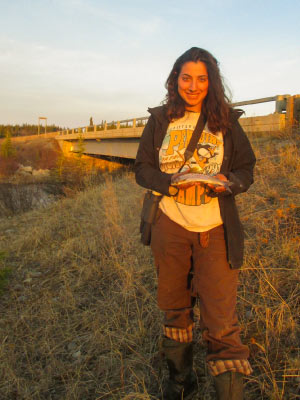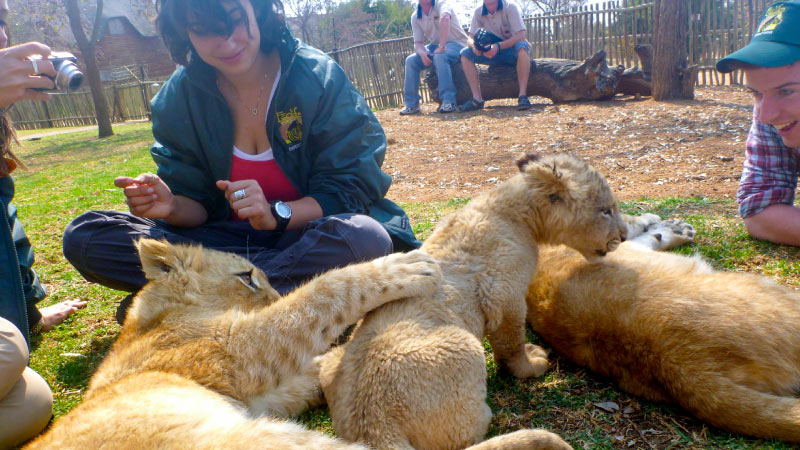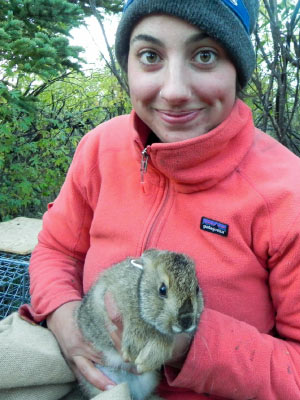
Naomi Louchouarn never wanted to work with water. In fact, during her master’s coursework in California where “every project was focused on either the ocean or the lack of water,” she says, “I was actively fighting working on anything water related.” But her passion for animals led to curiosities about the connections between animals, humans, and the land, which is where she ultimately found her niche as a “translator” between science and unique perspectives and knowledge systems. It’s a set of skills that she now puts to use in her role as a river restoration project manager.
Louchouarn began her academic career at McGill University in Montreal. She’d thought, as most animal-loving kids do, that she’d become a vet. But when she attended the pre-vet major orientation, the advisor didn’t waste time with pleasantries. “How many of you want to be vets?” he asked, and everybody raised their hands. “Well, probably none of you will be vets,” he stated. Disillusioned, Louchouarn and a friend went to the wildlife ecology major orientation next. “The guy was like, ‘Do you want to play with fluffy animals? Everybody gets to play with fluffy animals.’ Sign me up!” she recalls. As her courses started, she was drawn to the ecology-based classes and fell in love with fieldwork.
She continued her studies at the University of California, Santa Barbara’s Bren School of Environmental Science and Management, earning a master’s degree in conservation planning. Following in her mother’s footsteps, she then pursued her PhD in the Nelson Institute’s environment and resources program. Curious about the connectivity between animals and people, she joined the Carnivore Coexistence Lab alongside Professor Adrian Treves. There, she published a number of papers, including a landmark study on range-riding as a nonlethal form of livestock management in carnivore country.

After her thesis defense, Louchouarn relocated to northern Michigan — “the tip of the mitt is what they call it,” she explains, holding up a hand. She was hired as a river restoration project manager for the Grand Traverse Band of Ottawa and Chippewa Indians, one of the state’s 12 federally recognized tribes. She’s working to remove humanmade physical barriers that inhibit the passage of native fish like brook trout, perch, and lake sturgeon. “We tend to think of salmon that can jump up waterfalls, but a lot of native Great Lakes fish can’t actually do that,” she says. “Our rivers are quite flat, they’re meandering, and they’re pretty low gradient. So even the small barriers, like a culvert that’s just sitting a little high, that’s not good for our native fish in this region.”
The tribe and local partners have been working to improve connectivity for decades, but recent grants and the Bipartisan Infrastructure Law have jump-started the efforts. Just this summer, Louchouarn helped write a successful grant proposal resulting in nearly $12 million from NOAA to both conduct restoration work and return land to the tribe throughout the region.

The river restoration efforts have larger implications of cultural restoration, Louchouarn explains, which is partly what attracted her to the position. Running through the center of Traverse City is the Boardman River — formerly known as the Ottoway River, which was, and is, a vital resource to the indigenous communities that lived there long before colonizers came. When they did, they began to build the city around the river, ultimately hiding it. “All the alleys dump on the river,” she describes. “This river is sort of invisible. In a lot of ways, so is the tribe. Most tribal nations in the U.S. have been made invisible. And so having the tribe lead some of this restoration work makes both the tribe and the river more visible again.”
Louchouarn will be the first to tell you that she doesn’t have the strongest background in aquatic systems. Where she excels — and why she landed the job — is her communication around these complex systems. “My work in the Carnivore Coexistence Lab has helped me with being really sensitive to people’s perspectives and being able to stand in between all of those perspectives and communicate across them,” she says. Louchouarn has maintained a part-time appointment in the lab, allowing her to both publish and mentor the next crop of Nelson PhDs. One of her current students put into words what Louchouarn had long felt: “As scientists, we are service providers,” she relays. “My skills as a scientist are that I know about ecology, and I know about systems thinking, but I don’t know what you need to know. So …” she asks, “what are your questions?”